Saturday, February 04, 2006
Applause. Slowly--almost wincingly--he climbs the three or four steps to the stage, a young woman hovering at his arm. He is dressed in black from head to toe. He stands at the podium, shuffles his notes, lifts his head, and a look of mock surprise comes over his face: an audience. Pause for effect, and then with a rakish tilt of his saga-boy hat: "It's me."
Minshall. At the Central Bank auditorium Friday morning, delivering the feature address at the opening of an exhibition of photos: Noel Norton's classic images of George Bailey and Harold Saldenah's mas of the 1960s. But "address" is far too staid a word for the performance Minshall puts on. As ever with Minshall, this is theatre, and all the elements are there: script, movement, lights, music, dance, and the drama of his eyes and voice and mind. "The Artist and the Mas": that is the title of his piece, but clearly for Minshall "artist" and "mas" are broad enough terms that anything might be worked in--and is, with a virtuoso's flourish.
There is some fumbling with the microphone, and a technician emerges onto the stage to run a wire under Minshall's shirt. A look of delighted surprise on the masman's face. Laughter.
"In a world that's mastered by technology, in a world where we live the life of the three screens, the movie screen, the TV screen, the computer screen, and everything is push a button, push a button, push a button--the world that we inhabit here in this island, our energy is human energy. The button you press in the world of the mas is the belly button."
He begins with his birth in Georgetown, British Guiana, in 1941 (but "I was conceived in Trinidad!"), then leaps forward to his fourth birthday: 16 July, 1945, the day the first A-bomb was tested in New Mexico--at a test site called Trinity. "Man made and saw his brightest light ever." He spins a dizzy web of connections and coincidences: the cosmic dance of Shiva, the Trinity Cross, mankind's origins in Africa. And then his Genesis: a version of the creation myth in which God is an artist working in a darkened studio, a divine workshop that sounds much like a mas camp, where band sections like Stars and Planets and Oceans and Mountains get built before the masman turns to his masterpiece, the king of the band, a creature called Man.
"He do so--and he make the little ankle and the two little foot, the little toenails, no two the same size ... and he come so and he do the knees and the thighs and the torso [moulding an invisible body with his hands]--and the bellybutton [a lick of the finger, a poke]--the two nipples, the shoulders, the arms, the muscles--wait, nah! And the inside! So complicated! And the outside! Matching together! Coming up--the ears, the little earlobes, all of that fancy thing there [tracing the curves of his own ears]--the mouth, the nose, the eyes, the eyelashes, the hair on the head.
"And God do so--[stepping back and admiring his handiwork]. And God say: Walk."
One awkward, lunging step.
"And God say: Dance."
Two or three elegant moves, Bob Fosse style.
"And God say: Sing. And the thing open he mouth and make a sound prettier than any bird song that God self did make.
"And God next wish--he didn't even have to speak, God think the next wish, God think: Think.
"And the little fella head open--with that wondrous thought he looked at the beauty of the universe all around him.
"And God, the greatest artist of all time, did not then say: Kneel.
"So, artist to artist [looking up]: I don't kneel down no more."
Every now and then, he remembers he has a written speech waiting for him at the podium, and he slips on his glasses and reads in polished tones. But when some image or phrase catches his excitement, he pounces to the centre of the stage, and leaves his script far behind. His stream of ideas is just as nimble, flowing from religion to politics to the question of social justice; from urban planning to Megasthenes describing Holi in India two thousand years ago; from a powerful denunciation of the plan to erect a Carnival "centre" in the Savannah to a breathtakingly sharp assessment of the work of Leroy Clarke (his paintings "will never dance in the street"); from a story about wearing a fancy sailor suit to a London gallery opening back in the 70s to the memory of George Bailey's black Queen Elizabeth from Merrie England, stepping from a golden coach wearing an orange wig made from old rope. "A wig to fit our own head."
And all his arguments thrust towards this belief: that "the mas", "living art that we make fresh every year", is the highest and deepest artistic expression of Trinidad. "Our aesthetic is performance, the living now." And this aesthetic is also an epistemological imperative: Carnival is the chance, once a year, "to be who we are in our own heads", to truly understand ourselves. And here in the Caribbean, "we are at the tip of the spear that leads to the future."
And his voice resounds and his eyes burn like a prophet's, and I'm freshly amazed at the audacity and optimism of this creed, and I wonder what would happen if enough of us believed.
The audience gives him a standing ovation, and a few musicians come on playing old-time calypso. Minshall dances off the stage, and on a screen overhead is projected rare footage of mas in the Savannah in the 60s.
I step out of the Central Bank's cool lobby onto St. Vincent Street, and walk up the block to Independence Square. The noonday sun blazes down, and Port of Spain, as always, is noisy, dirty, and alive. It feels like the dry season has finally started. And this great thought rides a surge of impatient thrill through all my nerves and veins: Carnival is coming.
Minshall. At the Central Bank auditorium Friday morning, delivering the feature address at the opening of an exhibition of photos: Noel Norton's classic images of George Bailey and Harold Saldenah's mas of the 1960s. But "address" is far too staid a word for the performance Minshall puts on. As ever with Minshall, this is theatre, and all the elements are there: script, movement, lights, music, dance, and the drama of his eyes and voice and mind. "The Artist and the Mas": that is the title of his piece, but clearly for Minshall "artist" and "mas" are broad enough terms that anything might be worked in--and is, with a virtuoso's flourish.
There is some fumbling with the microphone, and a technician emerges onto the stage to run a wire under Minshall's shirt. A look of delighted surprise on the masman's face. Laughter.
"In a world that's mastered by technology, in a world where we live the life of the three screens, the movie screen, the TV screen, the computer screen, and everything is push a button, push a button, push a button--the world that we inhabit here in this island, our energy is human energy. The button you press in the world of the mas is the belly button."
He begins with his birth in Georgetown, British Guiana, in 1941 (but "I was conceived in Trinidad!"), then leaps forward to his fourth birthday: 16 July, 1945, the day the first A-bomb was tested in New Mexico--at a test site called Trinity. "Man made and saw his brightest light ever." He spins a dizzy web of connections and coincidences: the cosmic dance of Shiva, the Trinity Cross, mankind's origins in Africa. And then his Genesis: a version of the creation myth in which God is an artist working in a darkened studio, a divine workshop that sounds much like a mas camp, where band sections like Stars and Planets and Oceans and Mountains get built before the masman turns to his masterpiece, the king of the band, a creature called Man.
"He do so--and he make the little ankle and the two little foot, the little toenails, no two the same size ... and he come so and he do the knees and the thighs and the torso [moulding an invisible body with his hands]--and the bellybutton [a lick of the finger, a poke]--the two nipples, the shoulders, the arms, the muscles--wait, nah! And the inside! So complicated! And the outside! Matching together! Coming up--the ears, the little earlobes, all of that fancy thing there [tracing the curves of his own ears]--the mouth, the nose, the eyes, the eyelashes, the hair on the head.
"And God do so--[stepping back and admiring his handiwork]. And God say: Walk."
One awkward, lunging step.
"And God say: Dance."
Two or three elegant moves, Bob Fosse style.
"And God say: Sing. And the thing open he mouth and make a sound prettier than any bird song that God self did make.
"And God next wish--he didn't even have to speak, God think the next wish, God think: Think.
"And the little fella head open--with that wondrous thought he looked at the beauty of the universe all around him.
"And God, the greatest artist of all time, did not then say: Kneel.
"So, artist to artist [looking up]: I don't kneel down no more."
Every now and then, he remembers he has a written speech waiting for him at the podium, and he slips on his glasses and reads in polished tones. But when some image or phrase catches his excitement, he pounces to the centre of the stage, and leaves his script far behind. His stream of ideas is just as nimble, flowing from religion to politics to the question of social justice; from urban planning to Megasthenes describing Holi in India two thousand years ago; from a powerful denunciation of the plan to erect a Carnival "centre" in the Savannah to a breathtakingly sharp assessment of the work of Leroy Clarke (his paintings "will never dance in the street"); from a story about wearing a fancy sailor suit to a London gallery opening back in the 70s to the memory of George Bailey's black Queen Elizabeth from Merrie England, stepping from a golden coach wearing an orange wig made from old rope. "A wig to fit our own head."
And all his arguments thrust towards this belief: that "the mas", "living art that we make fresh every year", is the highest and deepest artistic expression of Trinidad. "Our aesthetic is performance, the living now." And this aesthetic is also an epistemological imperative: Carnival is the chance, once a year, "to be who we are in our own heads", to truly understand ourselves. And here in the Caribbean, "we are at the tip of the spear that leads to the future."
And his voice resounds and his eyes burn like a prophet's, and I'm freshly amazed at the audacity and optimism of this creed, and I wonder what would happen if enough of us believed.
The audience gives him a standing ovation, and a few musicians come on playing old-time calypso. Minshall dances off the stage, and on a screen overhead is projected rare footage of mas in the Savannah in the 60s.
I step out of the Central Bank's cool lobby onto St. Vincent Street, and walk up the block to Independence Square. The noonday sun blazes down, and Port of Spain, as always, is noisy, dirty, and alive. It feels like the dry season has finally started. And this great thought rides a surge of impatient thrill through all my nerves and veins: Carnival is coming.
Subscribe to:
Post Comments (Atom)

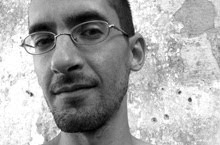


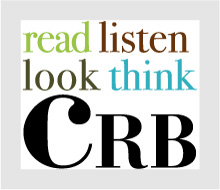
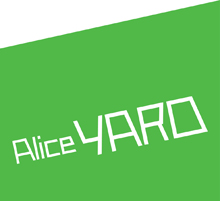
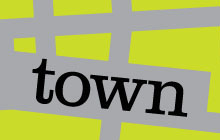

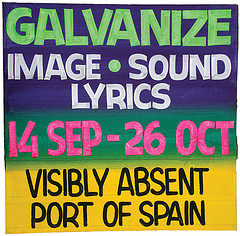
4 comments:
Brilliant buddy. thanks for that. Gives me goosebumps. Do you remember our friend at the NCC John Cupid? He was saying the same thing too - that performance is the fibre of Trinidad, that it was here long before the europeans stumbled and has always been burning. He told me that living art was the way of the original indians of the island, the Gurahoon, that they played animal mas themselves. Its a spirit that has always been here. i so believe that.
Good writing, but the topic never moves me... Minshall's greatest talent, I think, is marketing - and that brought the fake breast.
I wish you had written as much about the stick fights. Still, it's a good post to link at GlobalVoices. Especially for tourist season.
I don't suppose there's ever been an important artist or thinker who hasn't engaged in one form or another of "marketing", giving that term its broadest definition: from Socrates to Christ to Marx to whichever present-day mind you prefer, they've all been trying to convince someone to "invest" in something, whether that investment is time, money, passion, moral or political commitment, or life-blood. And Minshall is pretty clear on the interactions between commerce and art that make Carnival possible.
But his greatest and most durable achievement, I think, is the creation of an organic philosophy of Carnival--or, more precisely, of the masquerade--that draws on intense study of the formal evolution of the mas and our peculiar sociocultural context, and aims at nothing less ambitious than understanding and explaining us to ourselves. ("Thinking in our own head", as he put it on Friday.)
For his ambition and originality and powerful comprehension, I'd rank Minshall in the select company of James, Naipaul, Walcott, Best (and perhaps in time we'll see that Cozier belongs there too), the Trinidadian contingent in the pantheon of those who have laboured to understand the Caribbean from within (even when, as in Naipaul's case, "within" might seem to the naked eye more like "without").
I can't remember who said of T.S. Eliot that he wrote the essential criticism by which his own poetry was to be understood (Kenner, Ellmann, Stead, Gardner? Google is no immediate help). But it strikes me that something like this might also be said of Minshall (and James, Naipaul, Walcott, Best). He has broadened and deepened our idea of what Carnival is and might be, and so made it possible for us to understand what his own work truly achieves.
I'd love to write about the stickfighting, but I wasn't there--I was quoting Attillah Springer. Perhaps she can be convinced to post a more detailed report at her blog.
This in response to the comment left by Taran:
It never fails to surprise me that somebody would go to the lengths of leaving a comment saying that he/she is unmoved by the topic at hand.
I am unmoved by 99.99% of what is written on blogs. My response is either to stop reading and move on - certainly not to leave a comment expressing my lack of interest. Of what use is such a comment to the writer of the blog? Is he/she to stop writing what he/she is interested in merely because I am unmoved by it?
A comment like "the topic never moves me" seems to me a crass, arrogant and immature expression of one-upmanship and demonstrates a disturbing ignorance of the basic fact that a wide variety of interests and opinions is what makes the world go round.
Post a Comment